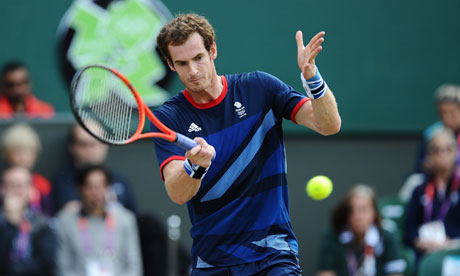
Introduction
Another of those games Britain made the mistake of giving the world, because it has barely won anything since it did, tennis is nevertheless enjoyed with undimmed cheer by swingers and rich teenagers nationwide every weekend. The modern, elite game – represented in the collective mind's eye by a super-slo-mo shot of Rafa Nadal gurning as he plays a forehand – bears little resemblance to the floaty, matronly game of yore, in which the rackets were called racquets and were made of wood, and the aim seemed to be not to inconvenience your opponent overmuch by winning a point. Some relics remain, such as the use of "love" when what one really means is "YOU'RE ON ZERO YOU LOSER". Few people know that the umpire's call "deuce" was once preceded by the words "what the". It's true. How dare you.
The basics
Two or four players face each other at either end of a 78ft court, divided in half by a net that stands at 3ft 6in by the posts and 3ft in the centre. The width is 27ft for singles and 36ft for doubles. The players attempt to strike a hollow rubber ball over the net so that it bounces first on the opposite side. Failure to land the ball within the lines, or return the ball before it bounces twice, results in the loss of a point.
A "game" is won by the first player to score four points (designated, for some reason, 15, 30, 40 and game), with the proviso, as in most racket games, that the winner must achieve a lead of two clear points. If the players are tied on 40-40 ("deuce"), then a player must first gain a point "advantage" before winning the game. A serve usually takes the form of an overhand smash into the diagonally opposite service box, with the server switching sides each time.
A "set" is won by the first to six games, with two clear games required. Matches are usually best of three, except in male grand slams, when they're best of five. Thankfully the winner doesn't need two clear sets or we'd be here all bloody year.
Health benefits
Tennis, requiring both sprint fitness, agility and endurance, is a tremendous all-round workout, strengthening both arms and legs. The club side of things can be fantastic in social terms.
Equipment, costs and practicalities
As with so much sports equipment, the cost of a racket really depends on your budget, but I personally wouldn't spend less than £30. Try to buy a recognised make. It's worth investing in a fresh grip that will mould to your hand – the ones that come with the rackets tend to be a bit threadbare. A few hours of playing shots can be quite hard on unaccustomed hands, so expect a few blisters at first. Any tennis club worth its slightly supercilious code of conduct will demand proper tennis shoes with non-marking soles. A decent pair will cost you £30 at least. Whites are sometimes required.
The Lawn Tennis Association (LTA) has provided this great court finder. If you can get a space on a municipal concrete job, do that to see how you take to it. If you want to join a club, there are far more of them than you'd ever think, given our success-allergy on the world stage. All are accessible through the above tool or the links below.
Trendiness rating: 6/10
One of the world's great spectator sports, tennis once epitomised our pre-Olympics fondness for falling at the final hurdle. Where will the British game go after Murray's Olympic gold?
Inside line
Laura Lord, LTA: "Tennis a great sport for anybody of any age or ability. It keeps you fit, it's fun and it's something you can do with the whole family. It's affordable, with club membership costing an average of £2.81 a week for adults and 94p for juniors.
"There are over 2,500 LTA-registered places to places tennis throughout the country, which welcome players of all levels, and there are plenty of park courts that you can learn the game on, including 200 "beacon" sites which offer an element of free coaching. There is 'mini tennis', for children aged three to 10, which uses smaller courts, nets and rackets and lower-bouncing balls to offer the perfect introduction to the sport, with all the fun and energy of the real thing.
"There is also 'cardio tennis', which is a series of tennis-based drills and activities played to up-tempo music on a tennis court. It does not require tennis skills, but is all about keeping your heart rate up, burning calories and having fun. And finally, the LTA runs a campaign called Allplay, which aims to encourage more people to get involved in the game by helping you to find people to play with locally. Go to the website to find out your local place to play and information on facilities and classes."
Find out more
lta.org.uk – Lawn Tennis Association.
britishtennis.com/ – contains a database of UK clubs.
You may also like
Badminton, volleyball.
You might hate
Diving, shooting.
Over to you
Play tennis? Help us build up this resource by sharing tips, videos, links to clubs and anything else that beginners might find useful.

